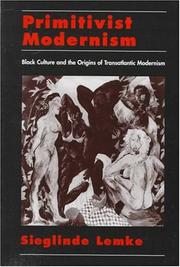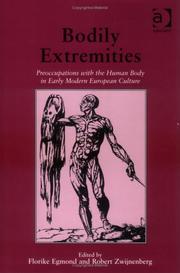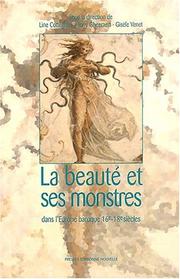| Listing 1 - 4 of 4 |
Sort by
|

ISBN: 019510403X 1423734599 0195344545 1280452544 1602566380 9781423734598 9780195104035 9781602566385 9786610452545 6610452547 0197715567 Year: 2023 Volume: *1 Publisher: Oxford : Oxford University Press,
Abstract | Keywords | Export | Availability | Bookmark
 Loading...
Loading...Choose an application
- Reference Manager
- EndNote
- RefWorks (Direct export to RefWorks)
Offering an account of modernism, this text focuses on cubism, primitivist-modernism, jazz, and Josephine Baker's performance, demonstrating that black art exerted a crucial if masked presence in both Euro-American high art and popular culture.
African American arts --- Arts, American. --- Arts, Black --- Arts, European. --- Modernism (Art) --- Influence. --- Arts [American ] --- Arts [European ] --- Arts americains --- Arts européens --- European arts --- Europese kunsten --- Kunsten [Amerikaanse ] --- Kunsten [Europese ] --- 820 <73> --- 820 <73> Amerikaanse literatuur --- Amerikaanse literatuur --- Arts, American --- Arts, European --- Black arts --- Negro arts --- American arts --- Afro-American arts --- Arts, African American --- Ethnic arts --- Influence --- United States --- Europe --- Arts [Black]

ISBN: 1315261448 1351955063 9781315261447 9781351955072 1351955071 9781351955065 9780754607267 0754607267 9781351955058 Year: 2016 Publisher: London ; New York : Routledge,
Abstract | Keywords | Export | Availability | Bookmark
 Loading...
Loading...Choose an application
- Reference Manager
- EndNote
- RefWorks (Direct export to RefWorks)
A strong preoccupation with the human body - often manifested in startling ways - is a characteristic shared by early modern Europeans and their present-day counterparts. Whilst modern manifestations of this interest include body piercing, tattoos, plastic surgery and eating disorders, early modern preoccupations encompassed such diverse phenomena as monstrous births and physical deformity, body snatching, public dissection, flagellation, judicial torture and public punishment. This volume explores such extreme manifestations of early modern bodily obsessions and fascinations, and their wider cultural significance. Agreeing that an interest in physical boundaries, extreme physical manifestations and situations developed and grew stronger during the early modern period, the essays in this volume investigate whether this interest can be traced in a wider range of cultural phenomena, and should therefore be given a prominent place in any future characterization of the early modern period. Taken as a whole, the volume can be read as an attempt to create a new context in which to explore the cultural history of the human body, as well as the metaphors of research and investigation themselves.
Pain in art. --- Human figure in art. --- Arts, European. --- Violence in art. --- European arts --- Human body in art --- Art --- Composition (Art) --- Figurative art --- Anatomy, Artistic --- Figure drawing --- Figure painting --- Pain in art --- Human figure in art --- Arts, European --- Violence in art --- E-books --- Corps humain dans l'art --- Violence dans l'art --- Douleur dans l'art --- Arts européens
Book
ISBN: 9789004269163 9789004328617 9004269169 9004328610 Year: 2016 Volume: 6 Publisher: Leiden ; Boston : Brill,
Abstract | Keywords | Export | Availability | Bookmark
 Loading...
Loading...Choose an application
- Reference Manager
- EndNote
- RefWorks (Direct export to RefWorks)
The ubiquity of references to dogs in medieval and early modern texts and images must at some level reflect their actual presence in those worlds, yet scholarly consideration of this material is rare and scattered across diverse sources. This volume addresses that gap, bringing together fifteen essays that examine the appearance, meaning, and significance of dogs in painting, sculpture, manuscripts, literature, and legal records of the period, reaching beyond Europe to include cultural material from medieval Japan and Islam. While primarily art historical in focus, the authors approach the subject from a range of disciplines and with varying methodology that ultimately reveals as much about dogs as about the societies in which they lived. Contributors are Kathleen Ashley, Jane Carroll, Emily Cockayne, John Block Friedman, Karen M. Gerhart, Laura D. Gelfand, Craig A. Gibson, Walter S. Gibson, Nathan Hofer, Jane C. Long, Judith W. Mann, Sophie Oosterwijk, Elizabeth Carson Pastan, Donna L. Sadler, Alexa Sand, and Janet Snyder.
animal art --- Iconography --- Canis familiaris [species] --- Literature --- Art --- anno 500-1499 --- Europe --- Dogs in art. --- Arts, European --- Animals and civilization --- Chiens dans l'art --- Arts européens --- Animaux et civilisation --- Themes, motives. --- Thèmes, motifs --- 7.042 --- Iconografie: fauna, dierenrijk, fabeldieren --- Dogs in art --- Themes, motives --- 7.042 Iconografie: fauna, dierenrijk, fabeldieren --- Arts européens --- Thèmes, motifs --- Animals and civilization. --- Civilization and animals --- Civilization --- Human-animal relationships --- European arts --- Europe. --- Council of Europe countries --- Eastern Hemisphere --- Eurasia --- Arts, European - Themes, motives --- Animals and civilization - Europe

ISBN: 2878542630 2878548477 Year: 2003 Publisher: Paris Presses Sorbonne Nouvelle
Abstract | Keywords | Export | Availability | Bookmark
 Loading...
Loading...Choose an application
- Reference Manager
- EndNote
- RefWorks (Direct export to RefWorks)
Les études réunies sous le titre La beauté et ses monstres sont nées d'un constat de rupture entre l'idéal platonicien qui posait l'alliance étroite du Beau et du Bien et les pratiques esthétiques des XVIe, XVIIe siècles. La poétique baroque, expression d'une crise de la pensée analogique et de l'idéalisme platonicien, procède en effet d'une reconnaissance implicite de la dangereuse contiguïté entre le beau et le monstrueux et trouve son originalité créatrice dans la mise en mouvement de formes « dépravées », dans l'invention de formes qui contreviennent aux lois de la « proportion ». Métamorphoses et anamorphoses jouent de cette virtualité du monstmeux latent en toute forme parfaite qu'un rien peut déformer, déjouant toute tentative de figier des rhétoriques littéraires ou d'immobiliser des genres dans une codification rigoureuse. De même, par l'attraction qu'elle exerce, tant physique que métaphysique, la beauté a suscité la défiance devant l'envers toujours possible de cet attrait, la séduction par une beauté frelatée ou trompeuse. L'étrange et fascinante intimité entre la beauté et ses monstres fonde de la cohérence d'une dynamique de recherche par-delà la variété des angles d'analyse adoptés et la contiguïté entre le beau et le monstrueux apparaît bel et bien comme facteur supplémentaire d'unité dans l'expression de la sensibilité baroque. Ce volume, à ce titre, est une contribution à l'histoire d'une esthétique liée à cette sensibilité et aux paradoxes par lesquels elle trouve à s'exprimer, paradoxes qu'implique la saisie unifiée d'éléments contradictoires. C'est une illustration de plus, s'il en fallait, d'une crise de la représentation qui a trouvé dans une esthétique de la discordia concors ou de la coincidentia oppositorum sa réponse la plus pertinente, sa « monstrueuse beauté »
Aesthetics of art --- Art styles --- Literature --- anno 1700-1799 --- anno 1600-1699 --- anno 1500-1599 --- Europe --- Monsters in literature --- Beauty, Personal, in literature --- Monsters in art --- Beauty, Personal, in art --- Baroque literature --- Arts, European --- Monstres dans la littérature --- Beauté corporelle dans la littérature --- Monstres dans l'art --- Beauté corporelle dans l'art --- Littérature baroque --- Arts européens --- Congresses. --- Congresses --- History and criticism --- Congrès --- Histoire et critique --- Monstres dans la littérature --- Beauté corporelle dans la littérature --- Beauté corporelle dans l'art --- Littérature baroque --- Arts européens --- Congrès --- esthétique --- monstres --- histoire --- beauté --- 16-18e --- Baroque
| Listing 1 - 4 of 4 |
Sort by
|

 Search
Search Feedback
Feedback About UniCat
About UniCat  Help
Help News
News